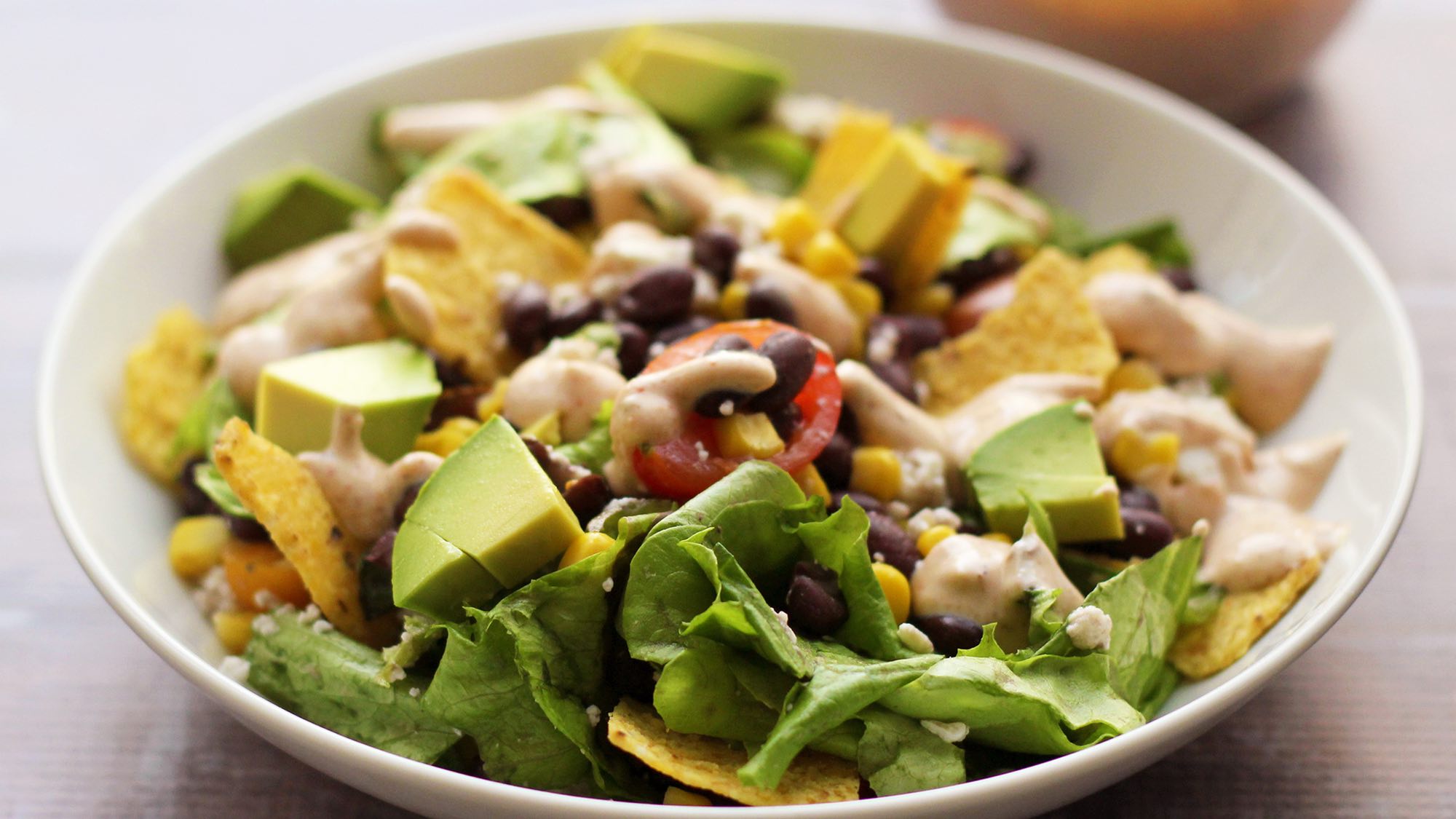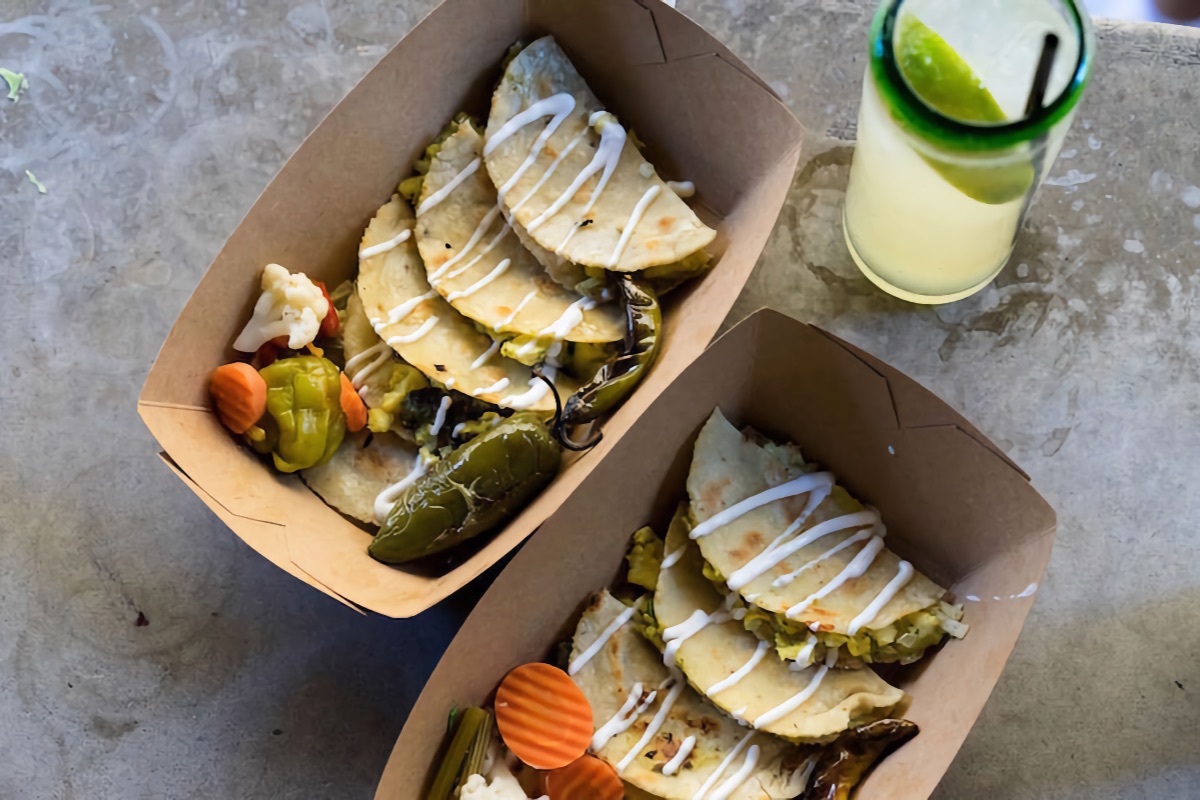For some people, building a good salad is intuitive; for others, it’s a surprising challenge. Mixing and matching various flavors and textures on top of a pile of leaves might not seem like too daunting of a task, but it’s easy to end up with a salad that’s too pungent, too salty, or—the absolute worst—bland.
You don’t need the mind of a chef to make a delicious salad. As the Wall Street Journal points out, by using a classic salad recipe as a template, you can hone your salad making skills, then branch out to craft your own perfectly balanced pile of vegetables (and other things).
Photo: McCormick
What do I meant by ‘template’?
To use a salad as a template, you have to get ahold of a written recipe, look at each of its ingredients, consider what each of those ingredients brings to the salad bowl, and then think of other ingredients with similar characteristics. Like with any good experiment, it’s a good idea to only change one variable—i.e., major ingredient—at a time. (You don’t have to be as rigorous as you would with an actual scientific experiment—we’re making lunch, not OLEDs or anything like that.) You can also add things you think the salad is lacking, either nutritionally or flavor-wise.
How to do it
Let’s take one of these leafy icons—we’ll use a favorite of mine, the wedge—and break it down. A wedge salad is comprised of:
- A quarter head of iceberg
- Diced tomatoes
- Crispy chopped bacon
- Red onion
- Blue cheese dressing (and perhaps some extra crumbles for good measure)
- Chives
This is a rich, salty salad, and it is amazing, but you can immediately see some areas that are ripe for modification. If you wanted to pack a little more health in there, the obvious place to start is the lettuce. Iceberg may offer a lot of cool crunch, but it’s mostly water. Purple radicchio looks pretty when cut into a wedge, and it provides a nice bitter note to help cut through all that fat and salt. You can also do a “deconstructed” wedge with any chopped salad green, just make sure to pick something with a little heft, as blue cheese and bacon can weigh down more delicate leaves.
As far as other swaps, the allium department is another portion of the recipe worth investigating. Crispy fried shallots or fried slices of garlic both bring the pungency of a red onion, along with some nuttier Maillard-esque flavors. Green onion or green garlic can (obviously) stand in for chives. If you want to get really crazy, you can sub in strawberries for tomatoes. It may sound insane at first blush, but they have a similar amount of acidity and sweetness and—if you are one to get hung up on aesthetics—they are also red, which is nice.
The only things I wouldn’t mess with too much here are the blue cheese dressing and bacon. Maybe I could be convinced to use crispy prosciutto, but prosciutto is a lot more expensive than bacon, and frying prosciutto means you render that silky fat into oblivion, and silky fat is at least half the point of that particular cured pork product.
Photo: McCormick
What other salads could you use?
If you are not well-versed in salad lore, allow me to provide a few icons of the genre, along with some suggested swaps and additions:
Caesar salad
Don’t care for anchovies? Use blue cheese in your dressing instead. Or swap out the romaine for another leaf (I really only do this during scary romaine recalls).
Cobb salad
Hard-boiled eggs are good, but Japanese ramen eggs are even better, as are miso-cured eggs, or straight-up cured egg yolk.
Niçoise Salad
Try asparagus instead of the usual green bean, and perhaps try a roasted fingerling as the potato. I wouldn’t omit the olives, but I would add cornichons or capers for little pops of briny-ness.
Watermelon and feta salad
Use a different salty cheese, such as cotija, and add lime or chili powder (or Tajin) for extra credit.
Of course, the salad you choose as your template does not have to be a capital-C “classic.” Any salad recipe from a reputable salad source will serve you well. Tinker until you get a sense of what works (and what doesn’t) then move on to making your own veg-based creations.
This article was written by Claire Lower on Skillet and shared by Claire Lower to Lifehacker from Lifehacker and was legally licensed through the NewsCred publisher network. Please direct all licensing questions to legal@newscred.com.








